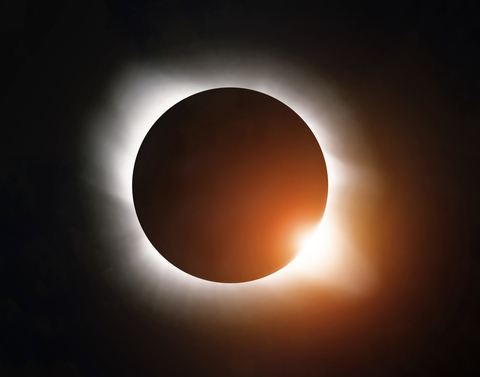One of the top scientific news articles you might be interested in concerns the only known repeating fast radio burst in the universe.

Researchers at Breakthrough Listen, a scientific research program dedicated to finding evidence of intelligent life in the universe has not ruled out the fact that the signal may come from an advanced civilization. Here’s what we know about the mysterious signal.
Fast radio bursts in space are not rare, but FRB 121102, first discovered in 2012, is the only one known to repeat. Its repetition is sporadic, releasing a “monstrous” amount of energy in each millisecond — comparable to what our own sun produces in a day.
Last year, the signal’s host galaxy, a star-forming dwarf galaxy 3 billion light-years away from Earth, was identified. Researchers have used the latest detections to learn more about the extreme environment for the source of the signal. The radio bursts are polarized and come from an environment that contains an incredibly strong magnetic field.
When radio waves pass through such a field, they are twisted in a way known as Faraday rotation. The stronger the field, the greater the twist, and the degree of twist for the latest detections of FRB is among the greatest ever measured in a radio source.
Danielle Michilli, a Ph.D. candidate at the University of Amsterdam, and ASTRON, the Netherlands Institute for Radio Astronomy, explains that FRB 121102 was already unique because of the repetitions. “Now,” she says, “the huge Faraday rotation we have observed singles it out yet again. We’re curious as to whether these two unique aspects are linked.”
The causes of such a strong magnetic field provide two intriguing possibilities: proximity to a massive black hole or within a powerful nebula. These hypotheses support some factors of the radio bursts, but raise some interesting questions as well.
A massive black hole could explain the persistent radio source and provide the right environment, but researchers aren’t sure that it could exist within a dwarf galaxy.
A powerful nebula – an interstellar cloud of dust and gas – could also explain the source, and would remain consistent with the fact that astronomers believe the source of the bursts is “young.” However, it’s a million times brighter than the Crab nebula in our own galaxy, which is already massively bright. How could the dwarf galaxy’s nebula be that bright?
As for the direct source itself, the latest findings support the idea that it’s either a neutron star or a pulsar (a highly magnetized, rotating neutron star).
The fact that the mysterious source sends out short bursts, ranging from 30 microseconds to 9 milliseconds, supports a source that is just over 6 miles across. That’s the right size for a neutron star.
Of course, it could be something as-yet undiscovered.
What do you think?




